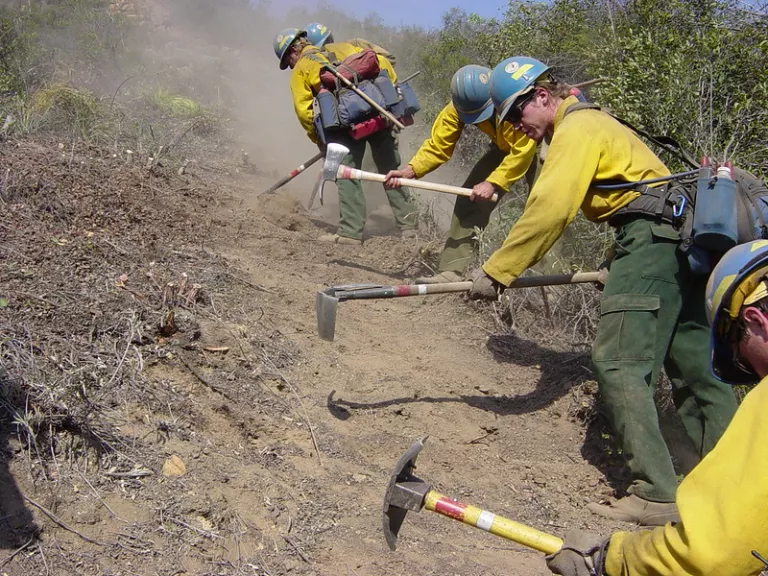
By Ileana Wachtel
Wildfires have become a constant in the life of most Californians; they've caused massive destruction to homes, lives, livelihoods and habitat, increased greenhouse gases, and negatively impacted biodiversity. The sweeping pace and colossal severity of the fires California endured in 2020 – more than 8,200 fires ravaged over 4 million acres – exacerbated by weeks of dry, hot conditions was a stark reminder of how fast climate change is accelerating and putting California at the precipice of a new era of wildfire impact.
And 2021 isn't looking much better, given the little rainfall the state has experienced so far. According to a report in the San Francisco Chronicle, "California is barreling toward its driest and most fire-prone months,” increasing the number of fires per month. In the month of January, there were 297 wildfires, compared to 97 wildfires in January 2020.
Experts describe this as the "new normal," where historic wildfire buffers such as 12-lane freeways now fail to stop wind-driven wildfires. The 2018 Woolsey fire jumped the 101 freeway, and the 2017 Thomas fire sped past 70 miles of fuel breaks and three major highways. The economic toll mirrors the loss of life and habitat devastation these fires cause. In 2020 the cost was over $12.079 billion, including over $10 billion in property damage and $2.079 billion in fire suppression costs.
Legislators have yet to pass a law that would prohibit building in Very High Fire Hazard Severity Zones, which numerous scientists and experts have touted as the most effective method to stop more destruction and death, particularly since approximately 95% of fires the California Department of Forestry and Fire Protection responds to are caused by humans. Alexandra Syphard, senior research scientist at the Conservation Biological Institute, and other experts told the Los Angeles Times, "to stem the escalating loss of life and property, California must curb development in high fire-hazard zones."
State Sen. Henry Stern's bill, SB 55, however, is poised to do just that. It would prevent housing construction (new development) in fire hazard severity zones "unless there is substantial evidence that the local agency has adopted a comprehensive, necessary, and appropriate wildfire prevention and community hardening strategy to mitigate significant risks of loss, injury, or death."
On April 8, Governor Newsom unveiled a $536 million funding plan focused on prevention measures. Legislators have put forth several bills that also address prevention tactics, including:
SB 45 – Climate Bond – Portantino would enact the Wildfire Prevention, Safe Drinking Water, Drought Preparation, and Flood Protection Bond Act of 2022.
SB 63 – Fire Prevention – Stern would create a fire resiliency corps and give grants to help people harden their homes against wildfires.
SB 12 – Planning and Zoning – McGuire would require a city or county that contains a very high fire risk area to amend the land use element of its general plan.
AB 642 – Wildfires -- Friedman would require the Director of Forestry and Fire Protection to identify areas in the state as moderate and high fire hazard severity zones.
The Sierra Club Wildland Urban Wildfire Committee focuses on addressing land use planning and other issues related to the increasing intensity and frequency of wildfires in the Wildland-Urban Interface (WUI). To that end, our committee initiated a resolution adopted by the Sierra Club on August 22, 2020, that “supports policies that prohibit new building in Very High Fire Hazard Severity Zones, consistent with established Sierra Club infill policy, to respond to increasing intensity and frequency of devastating wildfires on lives, habitat, property, infrastructure, and the environment.”
While prevention measures are effective and needed, the dangers of continuing to build in Very High Fire Hazard Severity Zones are undisputable. If we are going to stymie the destruction, death, and loss of habitat from wildfires, we must stop building in the WUI. And, there is hope: "Since we humans are the source of most fires, we are also the solution to reducing the number of costly and damaging fires," according to UMass Amherst researchers.
Right now, every day is Earth Day and presents an opportunity to take action and push for bold, transformative legislation that both helps combat wildfires now and plants the seeds for a sustainable future. For all Sierra Club Earth Week actions, click here.
Ileana Wachtel is a member of the Sierra Club Wildland Urban Wildfire Committee, a media strategist and communications expert.